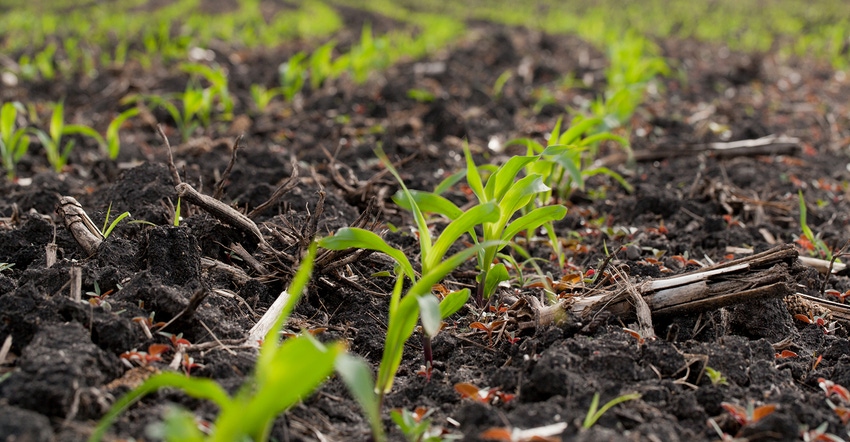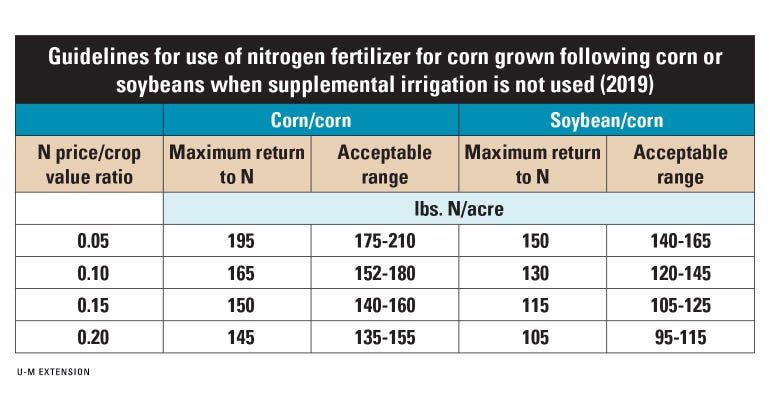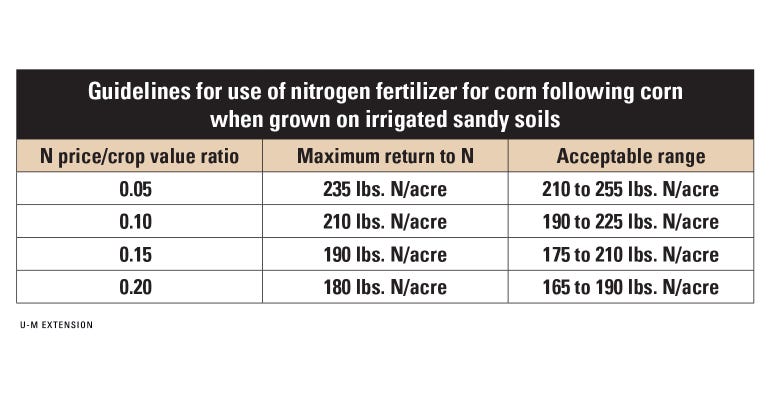
Agronomists with University of Minnesota Extension have updated the state’s corn nitrogen guidelines to include data from 2017 and 2018.
Extension specialists Daniel Kaiser and Fabian Fernandez included data from 10 new corn-on-corn sites and 24 new corn-soybean sites. The sites were spread across southern Minnesota, all south of I-94, according to Kaiser. Many sites were located on U-M research and outreach centers. All sites were conventional tilled.
The agronomists use a maximum return to nitrogen (MRTN) ratio to determine fertilizer guidelines. The ratio uses data from the corn nitrogen response trials conducted across the state. The addition of the new data resulted in a slight increase in the amount of N suggested for both corn-corn and corn-soybean rotations (see table 1).

“The N rates increased by roughly 10 pounds,” Kaiser says. “The increase was mainly due to weather and more responsive conditions the past two years.”
The updated data is most relevant for corn production in the central and southern Minnesota on non-irrigated soils, the agronomists said.
Using the price ratio
Calculating the price ratio for the cost per pound of N/value of corn per bushel is a key component of the MRTN guidelines, the agronomists said. In most cases, the price ratio moderates around 0.10 so the 0.10 price ratio is typically a starting point for most. The guidelines are tailored to a specific price ratio to allow for adjustments in rates based on fluctuations in nitrogen prices.
The table lists a handful of N price/crop value ratios. Farmers who want to look at more specific ratios may go online to the Iowa State corn N rate calculator at cnrc.agron.iastate.edu.
Farmers with irrigated corn should follow recommendation offered in table 2.

In areas of the Red River Valley, research has typically shown that less nitrogen is needed for corn, with rates ranging from 100 to 120 pounds of N sufficient for corn following soybean. Kaiser notes that the database in northern growing regions in Minnesota is small at this time. Information on fertilizing corn in this region is available on the Extension website.
About the Author(s)
You May Also Like






